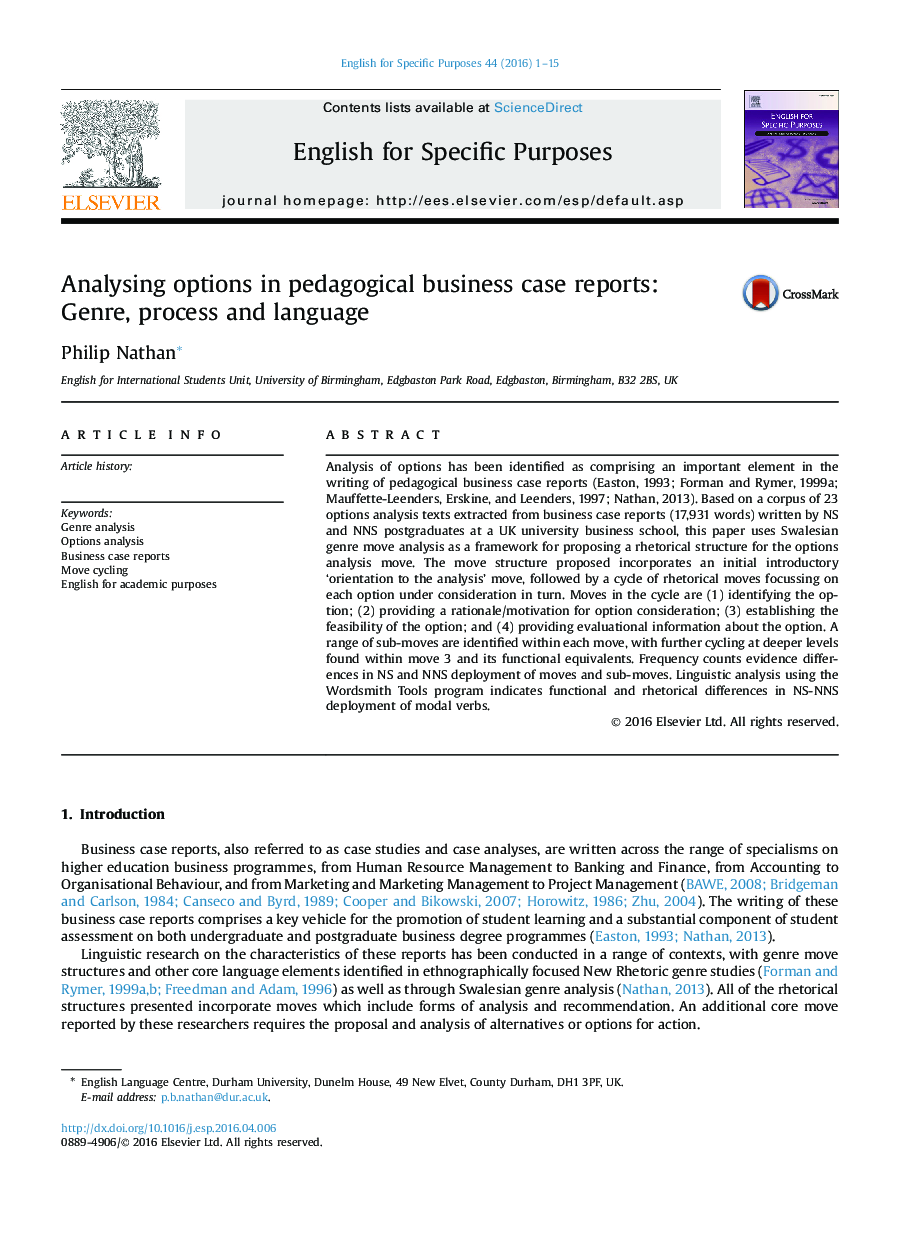| Article ID | Journal | Published Year | Pages | File Type |
|---|---|---|---|---|
| 355284 | English for Specific Purposes | 2016 | 15 Pages |
•A rhetorical move structure for business case report options analysis is presented.•An introductory orientation move is followed by a repeating four-move cycle.•Further rhetorical cycling occurs at deeper levels within the four-move cycle.•Modal verbs are core to realising the options and alternatives move.•Differences are identified in NS-NNS move deployment and modal verb utilisation.
Analysis of options has been identified as comprising an important element in the writing of pedagogical business case reports (Easton, 1993; Forman and Rymer, 1999a; Mauffette-Leenders, Erskine, and Leenders, 1997; Nathan, 2013). Based on a corpus of 23 options analysis texts extracted from business case reports (17,931 words) written by NS and NNS postgraduates at a UK university business school, this paper uses Swalesian genre move analysis as a framework for proposing a rhetorical structure for the options analysis move. The move structure proposed incorporates an initial introductory ‘orientation to the analysis’ move, followed by a cycle of rhetorical moves focussing on each option under consideration in turn. Moves in the cycle are (1) identifying the option; (2) providing a rationale/motivation for option consideration; (3) establishing the feasibility of the option; and (4) providing evaluational information about the option. A range of sub-moves are identified within each move, with further cycling at deeper levels found within move 3 and its functional equivalents. Frequency counts evidence differences in NS and NNS deployment of moves and sub-moves. Linguistic analysis using the Wordsmith Tools program indicates functional and rhetorical differences in NS-NNS deployment of modal verbs.
Graphical abstractFigure optionsDownload full-size imageDownload as PowerPoint slide
